This blog is generated from material covered in the PM professional development session: “DIY Instrumental Repair Hacks” presented by Randy Beardon
As a music educator, you know that brass instrument maintenance is crucial for a harmonious ensemble. Among the challenges faced by band directors and music teachers, dealing with stuck slides on brass instruments is a common yet often overlooked issue. This comprehensive guide will delve into the art of brass instrument maintenance, focusing specifically on the crucial task of releasing calcified tuning slides and mouthpieces.
Understanding the Impact of Stuck Slides on Musical Performance
Brass instruments, from trumpets to tubas, rely on smooth-moving slides for proper tuning and playability. Over time, these slides can become calcified or stuck due to mineral deposits, lack of use, or improper care. A stuck slide not only hampers the instrument’s tuning capabilities but can also discourage students from practicing and performing at their best.
Identifying Stuck Slides: Key Indicators
Before diving into solutions, it’s essential to recognize the signs of a stuck slide:
– Difficulty in moving the slide
– Visible corrosion or discoloration around the slide area
– A noticeable change in the instrument’s tuning or tone quality
Essential Tools for Brass Instrument Maintenance
To effectively address stuck slides, music educators should assemble a basic maintenance kit. Here are the crucial tools you’ll need:
1. Micro torch
2. Valve oil
3. Penetrating oil (also known as “cracker” oil)
4. Fine-grade steel wool
5. Mouthpiece puller
6. Clean rags or microfiber cloths
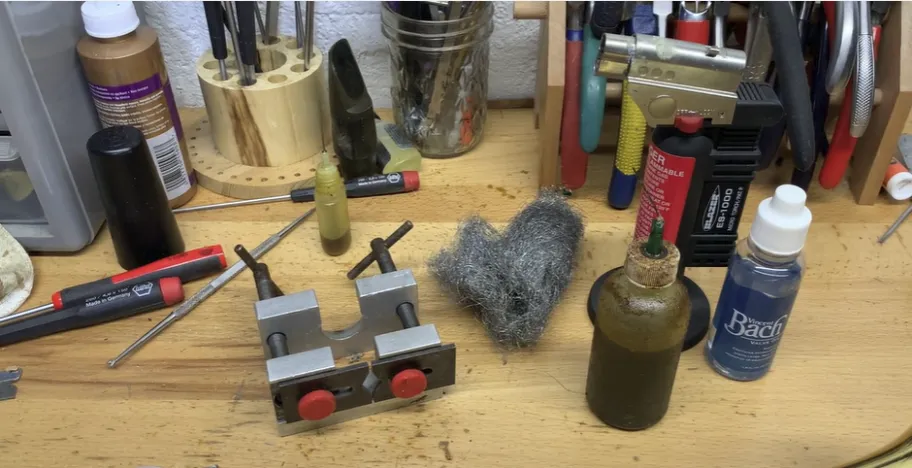
Safety Precautions: Protecting Instruments and Musicians
When working with heat and chemicals, safety should always be a top priority. Ensure you’re working in a well-ventilated area, wear protective gloves, and keep a fire extinguisher nearby. Remember, the goal is to free the slide without damaging the instrument or compromising its finish.
Step-by-Step Guide to Releasing Stuck Slides
Now, let’s walk through the process of freeing those stubborn slides:
1. Apply Penetrating Oil
Start by applying a few drops of penetrating oil around the stuck slide. This oil is designed to seep into tiny crevices and begin breaking down mineral deposits.
2. Heat Application Technique
Using the micro torch, gently heat the outer sleeve of the slide. Move the flame constantly to ensure even heating and avoid damaging the lacquer. The heat causes the metal to expand, which can help break the calcified seal.
3. Careful Extraction Process
Once heated, use a cloth to protect your hands and attempt to pull the slide. Apply steady, even pressure. If it doesn’t move immediately, reapply heat and try again. Patience is key in brass instrument maintenance.
4. Cleaning and Polishing for Optimal Performance
After successfully removing the slide, use fine-grade steel wool to gently clean both the inner and outer surfaces. This removes any remaining deposits and smooths the surface for better movement.
5. Proper Lubrication Techniques
Finally, apply a thin layer of valve oil to both surfaces of the slide. This will protect against future sticking and ensure smooth operation.
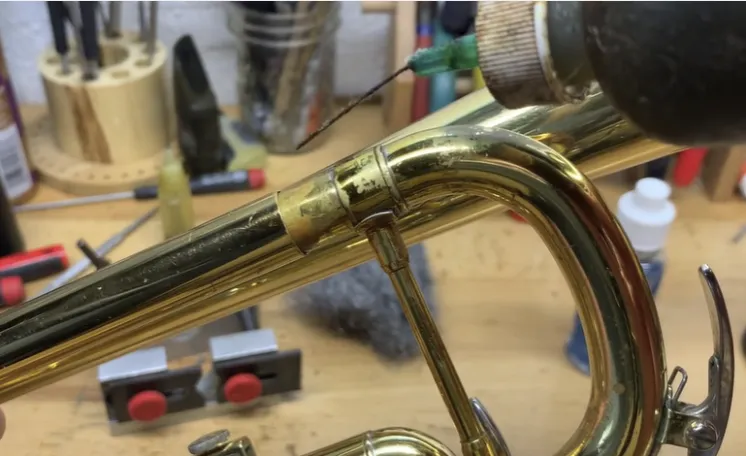
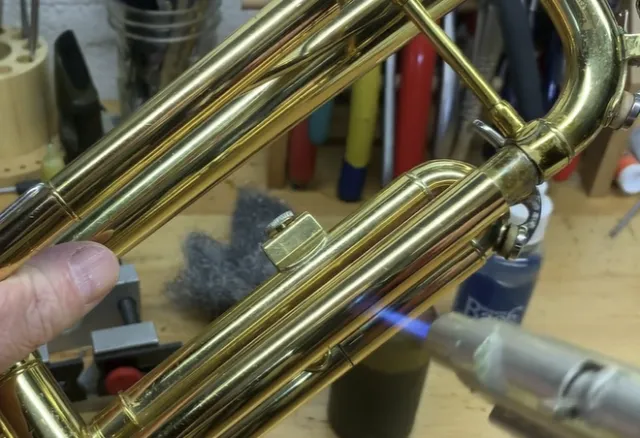
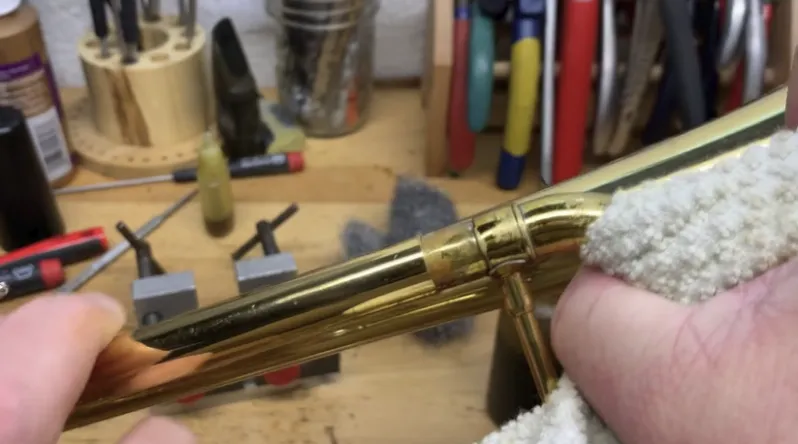
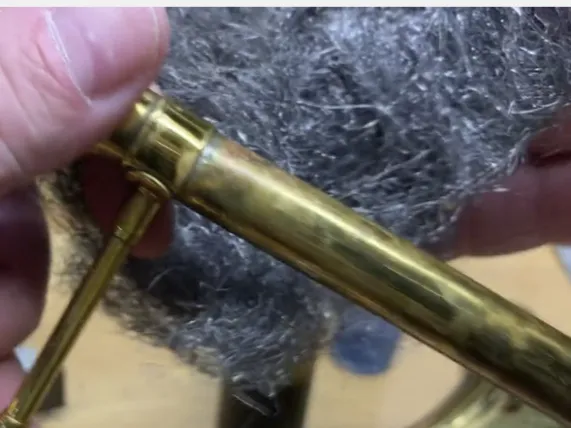
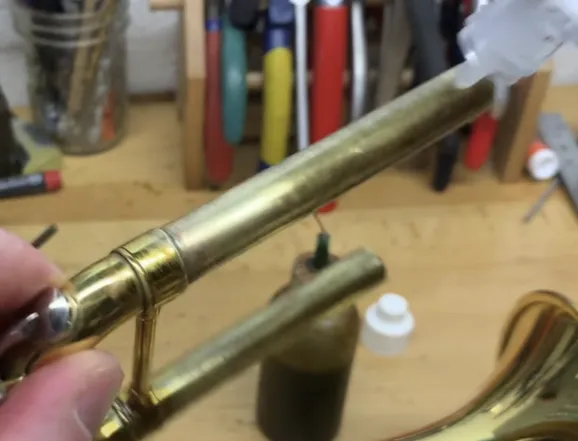
Preventive Brass Instrument Maintenance: Best Practices
While knowing how to release stuck slides is crucial, preventing them from sticking in the first place is even better. Encourage your students to adopt these practices:
– Regular cleaning and oiling of slides
– Proper storage in a cool, dry place
– Avoiding exposure to extreme temperatures
– Periodic professional maintenance
By incorporating these brass instrument maintenance techniques into your music program, you’ll not only extend the life of your instruments but also empower your students with valuable skills that will serve them throughout their musical journeys.
The Broader Impact of Instrument Care on Music Education
Understanding and practicing proper instrument maintenance goes beyond just keeping the equipment in working order. It instills a sense of responsibility in students, teaches them the value of caring for their tools, and can even spark an interest in the technical aspects of music production.
As educators, by emphasizing the importance of brass instrument maintenance, we’re not just teaching music; we’re imparting life skills that resonate far beyond the band room. Consider implementing a “Maintenance Monday” in your rehearsal schedule, where students learn and practice these essential skills.
Conclusion: Elevating Your Ensemble Through Proper Brass Instrument Care
Mastering the art of releasing stuck slides is an invaluable skill for any music educator. By following these steps and incorporating regular maintenance into your program, you’ll ensure that your brass section always sounds its best, allowing your students to focus on what truly matters – making beautiful music.
Take action today: Assess your instruments, create a maintenance schedule, and start implementing these brass instrument maintenance techniques. Your ensemble’s improved sound and your students’ newfound knowledge will be the rewards for your efforts.
For more tips on general instrument care, check out our article on “Comprehensive Instrument Maintenance for Music Educators“]
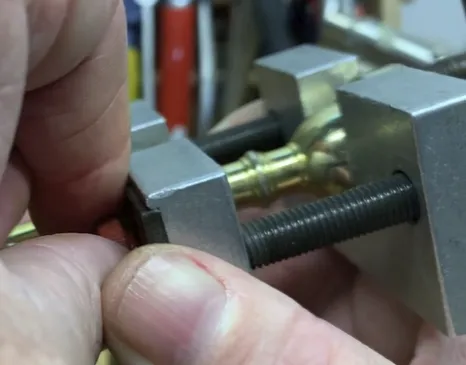

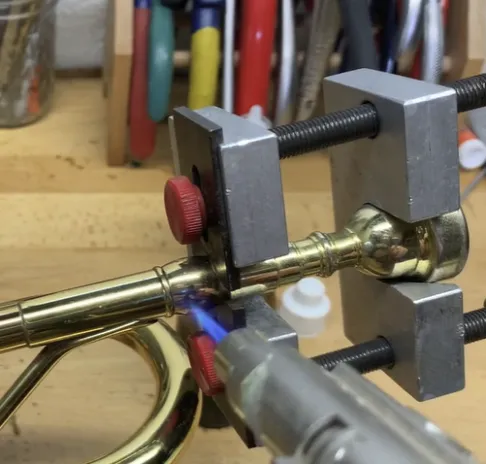








Leave A Comment
You must be logged in to post a comment.